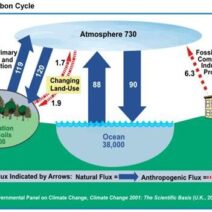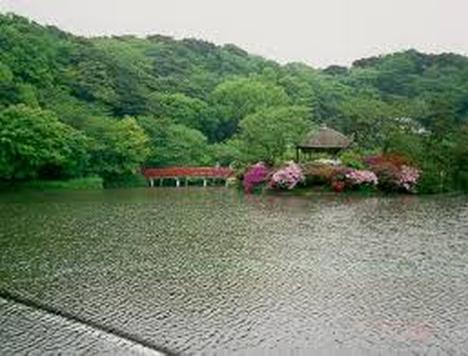Japan, an archipelago situated in the Pacific Ocean, exhibits a diverse climate spectrum shaped by its unique geography and topography. Spanning several latitudes and elevations, the islands experience a range of weather patterns that contribute to their rich biodiversity and influence the daily lives of their inhabitants. From blistering summers to snow-laden winters, Japan’s climate is a captivating phenomenon that merits deeper understanding.
The Japanese climate can be broadly categorized into four distinct seasons: spring, summer, autumn, and winter. Each season contributes unique characteristics that define not only natural landscapes but also cultural practices and traditions. In each of these seasons, Japan’s climate offers an alluring yet challenging environment for both flora and fauna.
Spring, which lasts from March to May, marks the awakening of nature. Cherry blossoms, or sakura, unfurl their petals, blanketing parks and streets in ethereal pink hues. The moderate temperatures, generally ranging from 10°C to 20°C (50°F to 68°F), make this season particularly delightful. However, spring also ushers in the rainy season, locally known as “tsuyu,” characterized by increased humidity and precipitation. This season is pivotal for farmers, who look forward to the rains that replenish the soil. Such climatic conditions favor the growth of rice, a staple in the Japanese diet, thus cementing spring’s significance in both societal and economic contexts.
Summer in Japan can be sweltering, with temperatures often exceeding 30°C (86°F), peaking in July and August. This period is synonymous with high humidity, which can make the heat feel even more oppressive. Popular summer destinations include the cooler northern regions of Hokkaido and mountainous areas, which provide relief from the urban heat islands of cities like Tokyo and Osaka. Furthermore, summer is rife with cultural festivals, most notably the fireworks displays that light up the sky during the Obon season. However, the sweltering summer heat poses challenges, such as increased electricity demand for cooling and potential health risks associated with heat exhaustion.
As summer transitions into autumn, temperatures begin to decline. Autumn in Japan, spanning from September to November, is celebrated for its vibrant foliage as leaves change to brilliant shades of red, orange, and yellow. This climatic shift evokes a sense of nostalgia, as many Japanese people partake in “momijigari” or leaf-peeping excursions, reveling in the beauty of nature’s transformation. The average temperatures during this season range from 10°C to 25°C (50°F to 77°F), allowing for pleasant outdoor activities. Additionally, autumn symbolizes a time of harvest, with various crops coming to fruition. This reflects a harmonious balance between the climate and agricultural practices, integral to Japan’s cultural identity.
Winter in Japan ranges from December to February and showcases an otherworldly diversity in climate. The northern regions, particularly Hokkaido, experience heavy snowfall, making them prime destinations for winter sports enthusiasts. The average temperatures in these areas can plunge to -10°C (14°F) or lower, accompanied by biting winds. Meanwhile, the southern parts of Japan have milder winters, where temperatures seldom drop below freezing. Despite the cold, winter is celebrated through various cultural festivities, including New Year’s celebrations and the famous “onsen,” or hot spring, experience. The contrasts between climate regions highlight Japan’s complex interaction with seasonal changes.
Moreover, Japan’s geographical layout as an island nation immerses it in maritime influences, contributing to its distinctive climate. The Japanese archipelago acts as a barrier to cold Siberian winds, while warm currents from the Pacific contribute to a more temperate climate in coastal regions. However, this also makes Japan susceptible to typhoons, particularly during late summer and early autumn. Each year, the nation braces for the impact of these tumultuous storms, which can result in torrential rain and flooding. While Japan’s infrastructure has been adapted to mitigate the effects of such natural disasters, the climate’s volatile nature raises concerns about resilience amid climate change.
The interplay between Japan’s climate and its rich cultural heritage cannot be overstated. Festivals and seasonal foods are intricately tied to climatic fluctuations, creating a unique cultural tapestry. For instance, winter is synonymous with warm comfort foods, such as “nabe,” a hot pot dish enjoyed during frigid nights. Additionally, the reverence for nature, encapsulated in Shinto beliefs, finds expression in the celebration of seasonal transitions. This symbiotic relationship between climate and culture fosters a deeper appreciation for nature and encourages sustainability practices.
Climate variability in Japan raises critical questions regarding future conditions as the world grapples with climate change. As temperatures continue to ascend and weather patterns shift unpredictably, Japan’s rich natural and cultural landscape faces unprecedented challenges. From altered rainfall patterns affecting rice production to rising sea levels threatening coastal communities, adaptive measures are becoming increasingly necessary. Policymakers and environmental advocates stress the importance of sustainable practices to mitigate these impacts, encouraging a collective effort toward environmental stewardship.
In conclusion, Japan’s climate, characterized by its snowy winters and hot summers, is a multifaceted phenomenon that encapsulates the essence of the country’s identity. Each season brings with it varying landscapes, cultural vibrancy, and agricultural significance that shape everyday life in Japan. Recognizing the intricate relationship between climate and culture not only fosters a deeper appreciation for Japan’s natural beauty but also underscores the urgency of addressing the challenges posed by climate change. As the archipelago navigates the uncertainties of a warming world, the resilience of its people and traditions will serve as a beacon of hope.






